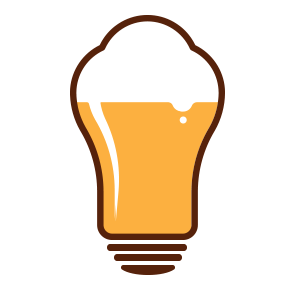Amsterdam: home of canals, Anne Frank, coffee shops, House music and Heineken. For over 150 years, Heineken has grown to become one of the most successful beer brands in the world. It has made its home in your fridge, your friends fridge and even in mine. You may even catch a glimpse of its famous green bottle and red star logo in bars, restaurants, sports stadiums and festivals.
So how did Heineken become so big? And who made it what it is today?
June 30th, 1863: a day that would spark the beginning of a new legacy of beer making; an idea sparked by a 22 year old known as Gerard Adrian Heineken.
When Gerard took the trip into Amsterdam, he knew straightaway what he was planning to do there: to open up his own brewery. With the Dutch brewing industry in decline, Gerard took the opportunity up to purchase the Haystack Brewery - with the help of his mother’s money - for a reasonable price.
In 1873, Gerard looked to Dr. Elion (a pupil of Louis Pasteur) to help him produce a pure yeast strain known as Heineken-A Yeast. This is what would give Heineken that signature Bavarian beer taste. After successfully producing the yeast, the Heineken’s Brewery Company was established on January 11th, 1873.
Eager to show the world their new beer, the Heineken Brewing Company was honoured with the ‘Diplome de Grand Prix’ in 1883, at the World’s Fair in Paris. And from here, it would get the recognition it deserved. From this, Heineken exported its first beer into Africa and co-founded Malayan Breweries which, still does to this day, produce Tiger beer.
Gerard’s son, Henry Pierre Heineken, took the helm of the company in 1917 to 1940 and helped to maintain the beer quality during large-scale production. With keeping the Heineken brand name under family control, Henry’s son, Alfred, began working in 1940 and became the key figure to Heineken’s global expansion by purchasing smaller breweries. He continued to have an influence on the company right up to his death in 2002.
But, like all alcoholic beverages at the time of the Prohibition Era, they were banned from entering the U.S. And once it was abolished in 1933, Heineken eventually touched down in New York - three days after the law was abolished!
Heineken had now managed to touch all the corners of the world (170 in total); satisfy the tastebuds of millions, take control of their rival, Amstel and become the major sponsor of UEFA Champions League! Now that is what you call true progression and determination - all thanks to a young mans ambition.
And they continue to adapt to change, as well. As people decide to look for healthier alternatives, such as watching their calorie intake, Heineken understood this and had to follow with the times, so in March 2017 they revealed their very own non-alcoholic beer: Heineken 0.0.
For over 150 years they have remained strong and dominant in the brewing industry; and another 150 years time they could well be the most popular beer for their famous Bavarian beer taste. And people will still look forward to holding and sipping on one of their famous green bottles - served chilled, of-course.

